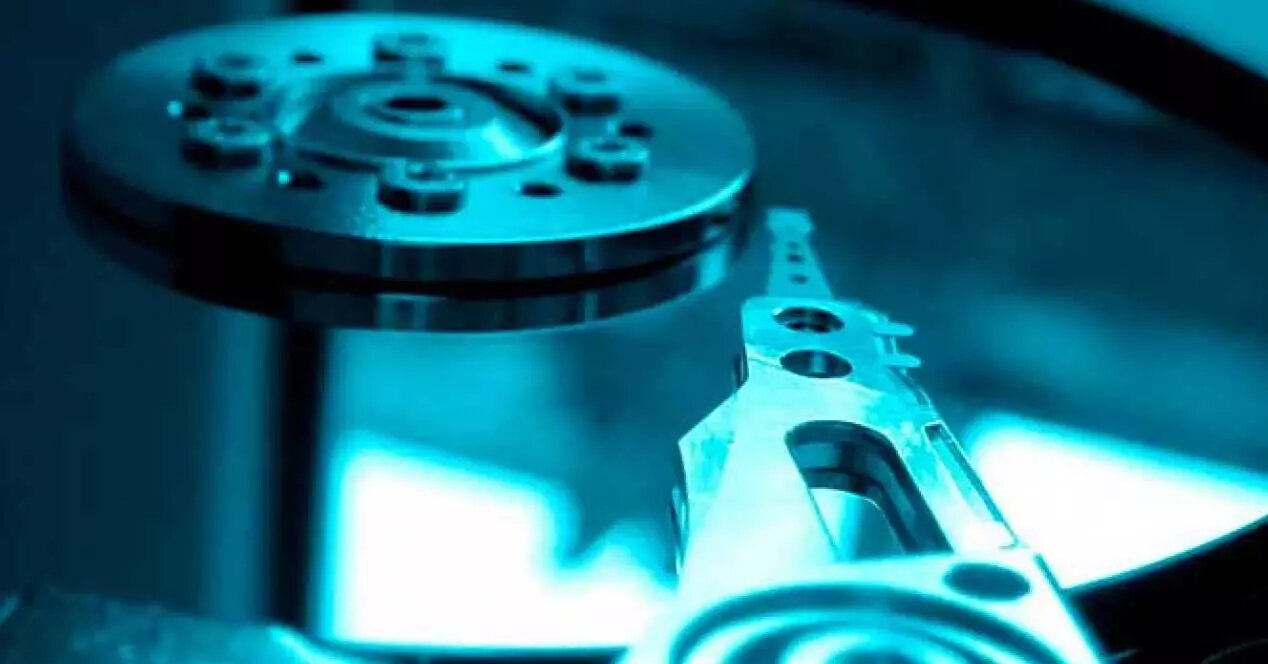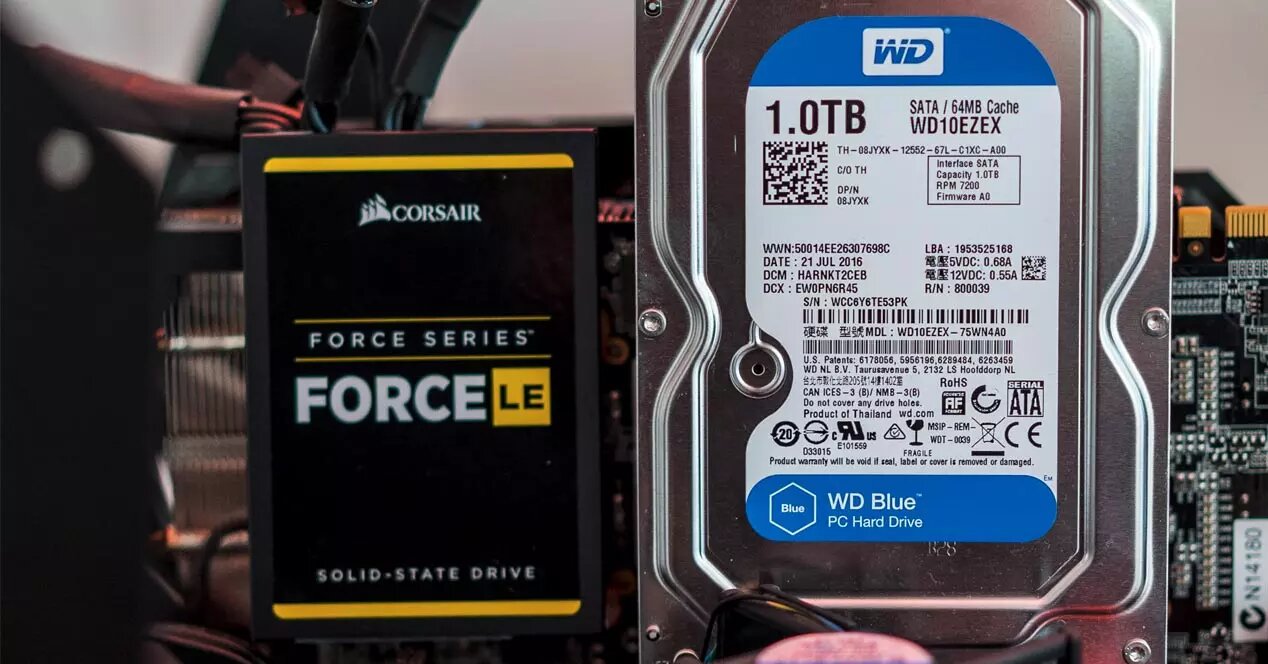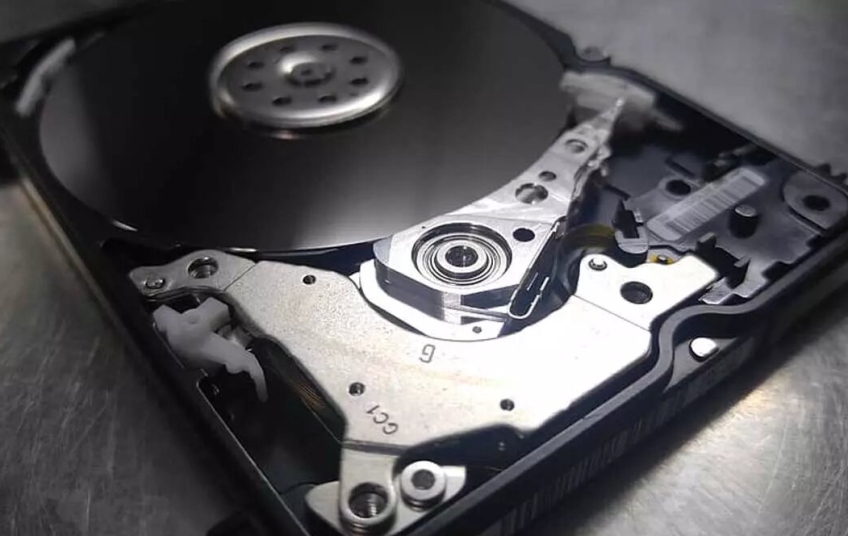When we install Windows on a hard drive by default, the operating system configures it as a basic drive, and the same happens when we add a new hard drive to the computer. However, we have the option of configuring it as a dynamic disk if we want, but what are the advantages of doing so? Is it something worth doing? In this article we are going to tell you what a dynamic disk is, how it differs from a basic one, and which mode is best for you depending on how you use it.
Before beginning to explain what a dynamic disk is, it is strictly necessary to first explain what a basic disk is, since as we have mentioned before it is the "version" that Windows will configure by default when we install the operating system, when we add a new hard drive and even when we connect any type of external storage to the PC.
What is a basic disk?
A basic drive is, as the name suggests, a hard drive with a basic configuration. It has been used since the days of MS-DOS and Windows NT and today it is still the default option that Windows configures on our hard drives unless we tell it otherwise.
When we refer to a basic hard drive, we refer to a type of configuration that is capable of managing all its partitions and data through a series of logical units that, as a general rule, can be configured as four primary partitions or three primary and one extended with multiple logical drives. Surely these terms have sounded familiar to you since the beginning of home computing back in the 80s when it was normal to refer to the partitions of a hard drive in this way.

However, since the Windows 2000 era we have the option of configuring it as a dynamic disk (and in fact it is something that we can do later, that is, we can convert a basic disk into a dynamic one), a configuration that provides the hard disk with different characteristics, so let's see what they consist of and what advantages it brings us to make this change.
These disks usually have two types of partition styles for the registry, well known by the way, which will depend on the operating system used: MBR or GPT. This also allows us, due to the distribution of the partitions and the file system, for a basic disk to fulfill more functions than expected at first, such as expanding the space of a partition with that which is unallocated, contiguous or adjacent, although with some drawbacks such as having to implement NTFS as the file system, but who uses FAT today on their HDD or SSD?
What is a dynamic disk and what advantages does it provide?
A dynamic drive is simply a configuration of it, not that it is a different type of drive (in other words, any hard drive can be configured as basic or dynamic regardless of hardware). The biggest difference with a basic one is that it works through dynamic volumes instead of partitions, which allows you to make modifications to its configuration that basic disks do not allow, such as expanding or reducing the size of a volume that is already created. .
Dynamic volumes can be non-continuous, that is, a primary volume can be made larger by extending it to the next unallocated space on the disk, without needing to be next to it. Additionally, you can create advanced volumes that include RAID environments, all within the same hard drive.

As a general rule, most users can survive perfectly with basic disks because it is usual to always create a single volume with the entire capacity of the disk. For example, if we have a 1 TB hard drive, we will create a 1 TB volume (or partition, in this case, as it is a basic disk).
Advantages and disadvantages
Thus, the advantages of converting a basic disk to dynamic are basically greater dynamism when "playing" with its partitions because we will not really be using partitions as such, but rather volumes within it. Thus, we can make the volumes larger or smaller, we can configure RAID volumes, and we can modify the space assigned to each one at will.
The main disadvantage of using a dynamic disk against a basic one is that it does not support multi-boot configurations, which means that we cannot have several operating systems installed on the same hard disk to be able to choose between them at boot, something that they do allow basic disks. So you will have to use virtual machines like Virtual Box or VMWare.
Also, a dynamic disk will never be able to have a partition marked as active, as that is something the basic disk is designated for having a partition system for the boot record. So we should not assume that a hard disk to store data must be dynamic, it does not have to, we can perfectly use one of the two as basic.
They are not the same as volumes or partitions
Basic or dynamic disk should not be confused with volumes or partitions. They are not the same either, but they are directly related as is obvious. The reason is that, as we have said, a disk can be dynamic or basic, that is chosen by the administrator, however, in both cases partitions or volumes can be configured according to the needs of the user or company, so the fact of where we allocate each HDD or SSD.
Without a doubt, dynamic disks are more versatile and these are generally based on the Logical Disk Manager and the virtual disk service in Windows and here comes the important part to understand the differences with an SSD or HDD in terms of concept: these two named systems are those that allow you to go from basic to dynamic or even to create a volume for error tolerance, all in the same physical component and for which we pay
When it is not recommended to convert a basic disk to dynamic
Despite the fact that converting a basic disk to a dynamic one gives advantages in terms of performance, it is not recommended in the following scenarios that we are going to explain below:
-
When you want to install an older version of Windows.
-
Unknown partitions like OEM ones might become inaccessible after conversion.
-
If you have a multi-boot environment, one of the operating systems may end up having trouble booting.
Outside of these three scenarios, converting a basic disk to a dynamic disk is safe. In any case, and in the case of the first point, unless you are going to use games or another heavy application, if what you need is to use Windows XP or any other operating system prior to Vista, due to the fact that your company's application It only works well on those operating systems, so our advice is to jump to dynamic and get rid of the virtual machine.
Are a basic or dynamic disk the same as an HDD?
The acronym HDD means Hard Disk Drive , which would indirectly translate as a hard drive, although it would literally be a hard drive controller. Of course, by this we mean the entire drive, not just the drive, but also the circuitry to control it and the interface that connects it to the computer. So they are an acronym that defines the type of physical storage unit.

Therefore, an HDD is a hard disk and, therefore, it can be basic or dynamic, but you will not find units in stores whose specifications can be read if it is a basic or dynamic hard disk, since at the level of hardware we are talking about device that is the same. Note that this difference is about how the operating system treats the drive by taking advantage of some of the unique capabilities its interface allows.
That is to say, we can buy a hard drive (the one that suits us best for capacity and price) and then later decide how we are going to want to configure it based on our needs and that we have already explained throughout the entire article.





